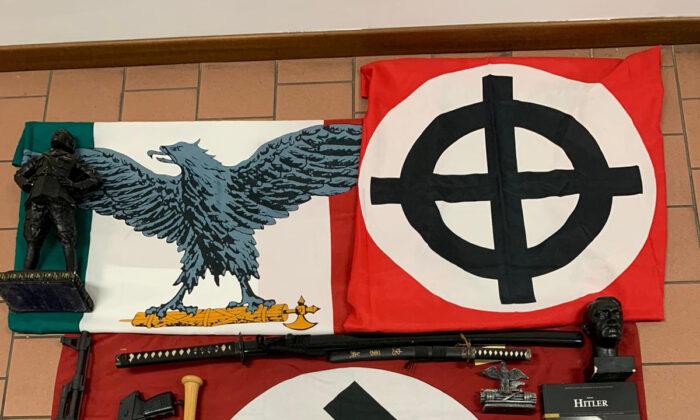When the cash-strapped Soviet Union stopped providing military support to its client government in Afghanistan in February 1989, U.S. intelligence officials predicted immediate demise for the Russian-backed Afghan regime.
They were wrong.
“Weeks passed and then more weeks. [Soviet-backed leader Mohammad] Najibullah, his cabinet, and his army held firm. Amid heavy snows, the Afghan military pushed out a new defensive ring around the capital, holding the mujahedin farther at bay,” author Steve Coll wrote in “Ghost Wars,” the Pulitzer Prize-winning history on Afghanistan in the 1980s and ‘90s. “As March approached, the Afghan regime showed no fissures.”
The Soviet-backed government survived for three more years, until the Taliban captured Kabul in 1992. Some observers say the Najibullah regime could have lasted indefinitely had the Soviet Union not collapsed in 1991—taking with it the remaining financial, intelligence, and arms it had been providing.
Commenting on the failure to accurately assess the situation in Afghanistan in the early 1990s, a CIA analyst told his colleagues that “not for the first or last time the CIA’s predictions were proving wrong,” according to Coll.
Soviet Withdrawal
The stark contrast between the two events prompts the question: Why did the Soviet-backed government of the 1980s and early 1990s fare so well compared to the United States’ failed client state?According to Davis, the Russians had a coordinated, organized plan for withdrawing from Afghanistan—and they stuck to that plan.
“The then-premier of the Soviet Union, [Mikhail] Gorbachev, concluded in the 6th year that the war was unwinnable, and so they spent another year coming up with a withdrawal strategy. They did it in a coordinated and predictable time over a three-year period, so that they then completed their withdrawal in the 10th year [of the war],” said Davis, a senior fellow with Defense Priorities who was deployed twice to Afghanistan as a Marine.
“And all along they were bringing up the Afghan military and the Afghan government of their choice, so they’d be effective afterward.”
Defense Priorities senior fellow Gil Barndollar—who, like Davis, was deployed to Afghanistan twice during his time in the Marines—said another advantage for the Soviet Union was that it had a presence in Central Asia dating back to the 1920s.

“The Russians finished their conquest in Central Asia, and it became the ‘Soviet-stan’ there, really in the 1920s. And they had been familiar with Afghanistan going back centuries,” Barndollar said at the press conference.
Moreover, the Soviets chose which Afghan leaders to support more wisely than the United States, according to Barndollar. While the Soviet-backed Mohammad Najibullah was a brutal authoritarian, he was nevertheless an effective leader who had the support of his own military and intelligence services, Barndollar said.
“Contrast that with [the U.S.-backed Afghan President Ashraf] Ghani, who’s a hypereducated Western technocrat with a lot of academic theories on failed states and reconstruction—but by all accounts, had a horrible political touch when it comes to managing competing interests, factionalism, and the day-to-day realities of Afghanistan,” he said.
Those factors help explain why the Russian-backed government survived for nearly three years after the Soviets withdrew militarily from Afghanistan, according to Barndollar and Davis.
American Policy
By comparison, the United States has been inconsistent on policies regarding Afghanistan for decades, Barndollar and Davis stated. To their point, Coll’s work shows that the U.S. government’s Afghanistan policy has been fractured since at least the Soviet withdrawal.“By early 1991, the Afghan policies pursued by the State Department and the CIA were in open competition with one another,” Coll wrote in “Ghost Wars.” “Both departments sought a change of government in Kabul, but they had different Afghan clients.”
The inconsistent U.S. policy continued under the Clinton administration, which pursued the incongruent policies of supporting mujahideen affiliates in Bosnia and Kosovo while simultaneously hunting Osama bin Laden in Afghanistan. And after a brief moment of mission clarity in the wake of 9/11—when the United States decimated al-Qaeda and the Taliban within months—the Bush administration again changed Afghanistan policy from counterterrorism to a nation-building project.
“We started going into what was called provincial reconstruction missions, and we were then providing money and support and jobs and guidance for building roads and schools and water treatment facilities and medical clinics.”
When President Barack Obama took office in January 2009, his cadre of national security officials tried to refocus what had been an aimless Afghanistan policy. They painted Afghanistan as the “good war” that had been neglected by an Iraq-obsessed Bush administration.
Throughout Obama’s tenure, his national security officials made numerous public pronouncements about alleged progress in Afghanistan. But those pronouncements were revealed to be misinformation in December 2019, when The Washington Post published what it dubbed the “Afghanistan Papers”—a previously secret history of the war compiled by the Special Inspector General for Afghanistan Reconstruction (SIGAR).
The SIGAR documents showed that U.S. national security officials were much more negative about Afghanistan than what they were saying in public.
Former Trump administration national security adviser Lt. Gen. Michael Flynn was one of the roughly 400 U.S. officials interviewed in the SIGAR report, and he wasn’t shy in voicing his concerns about what he said was misinformation coming from the government.
Decades in the Making
In the wake of the collapse of the Afghanistan government over the past week, politicians are now seeking to place blame on what’s widely considered a catastrophic failure of a withdrawal. Biden said at an Aug. 16 press conference that he’s merely executing a deal he inherited from Trump, while Trump fired back later that day, calling for Biden to “resign in disgrace for what he has allowed to happen to Afghanistan.”“It’s not that we left Afghanistan. It’s the grossly incompetent way we left!” Trump said in a statement.
But Davis and Barndollar both said that this partisan bickering misses the point—that the past week has been a disaster decades in the making.
“A lot of people are saying, ‘Biden caused all this because he conducted the withdrawal in a bad way.’ On the one hand, I won’t deny that exacerbated some of the problems. But that’s a really small portion of what happened,” Davis said. “This is a 20-years-in-the-making disaster, and it spans across every administration, including the Biden administration. No one gets off scot-free.”
Barndollar used the analogy of an unprepared student trying to cram for a test the night before.
“Most of this was baked into the outcome of a failed war and 20 years of American hubris and self-deception,” he said.
“Trying to execute a flawless endgame after that is like trying to cram for the finals the night before, after failing the course all semester. If you drink four Red Bulls instead of two, is that going to help? I guess it might, but you probably already screwed yourself with whatever you did beforehand.”




